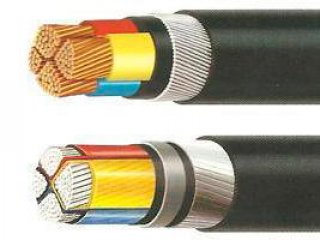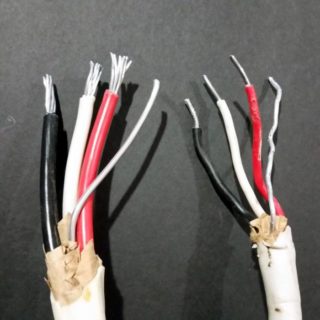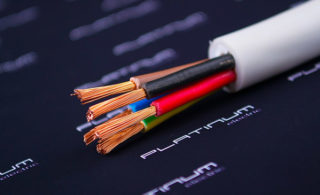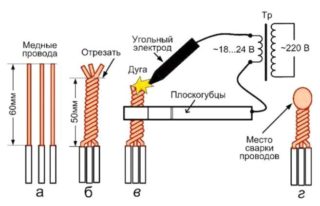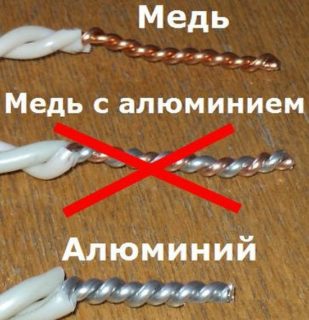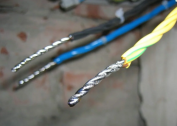Property owners often have difficulty deciding which wiring is best - copper or aluminum. This question arises before private developers and owners of city apartments in which major repairs are planned. Not only the operational characteristics of housing depend on the correctness of the decision, but also the safety of the owners. In order not to make a mistake in choosing the wiring, you need to deal with the pros and cons of each material, find out the general points and fundamental differences.
What to look for when choosing wires
When choosing between copper or aluminum for wiring, it is necessary to proceed from several criteria that determine the efficiency of the electrical system.
You need to pay attention to such nuances:
- Locations of sockets, lighting devices, package and keyboard switches. Based on the scheme, you can calculate the required footage of the cable.
- The total power of devices that will be simultaneously included in the network. It turns out an indicator of the maximum current load of the wires.
- Outlet Standard. They are adapted for connecting cores whose diameter does not exceed 2.5 mm. Corresponds to the current load and electrical conductivity of metals.
- The cost of the material. This parameter needs to be guided in the last turn, since security is above all.
We should not forget about such criteria as durability. Replacing communications is too expensive and time-consuming undertaking to be carried out every few years.
Aluminum properties
Aluminum belongs to the category of light, chemically and biologically inert metals with a specific gravity of 2700 kg / m³. The material is safe for humans and the environment.
Advantages of aluminum:
- Affordable cost. The price is determined by a lower melting point and lower production costs than other metals.
- Plastic. The wire bends well, keeping its shape. The veins are given any configuration necessary for work.
- The formation of a protective layer. The surface of the metal after cleaning is covered with a thin layer, which prevents its oxidation throughout the volume.
However, aluminum has the following disadvantages:
- High degree of resistance to electron flow. This causes the lines to heat up, which can lead to fire in the finishing materials.
- High level of thermal expansion. Because of this, weakening of the contact compounds occurs. With frequent switching on and off of lines with high load, the circuit is disconnected.
- Oxidation in contact with air. The film formed from this has poor conductivity, due to which the contacts overheat and melt the insulation, and the ground line simply ceases to fulfill its function.
- Short service life. It does not exceed 30 years with an average load.
Today, in accordance with the requirements of GOST, the use of aluminum is prohibited in the construction of residential buildings and engineering structures.
Copper properties
Copper is a heavy metal with a specific gravity of 8700 kg / m³. This indicator should be considered only when laying power lines with a limited margin of safety of the supports. In everyday life, they can be neglected. The material actively interacts with oxygen, forming an oxide - patina, which can be seen on statues, fences and souvenirs.
The advantages of copper are as follows:
- Durability.If the line does not pass on the street, it can last 30-50 years depending on the humidity of the room.
- Strength. Copper is resistant to twisting and bending. A quality cable can be deformed up to 100 times without losing its performance.
- High conductivity. The metal passes electrons well, without being exposed to heat and thermal expansion.
- Flexibility. The wiring easily takes the desired position, straightening after the termination of the load. It is convenient to work with cables during installation.
The material also has disadvantages:
- High price. This is explained by the difficulties of ore mining and the costs of its processing. To melt the concentrate, a large amount of energy is required, plus transportation costs.
- Oxidation by interaction with water and air. The resulting film affects the conductivity of the contacts and contributes to their heating.
Choosing between aluminum or copper wiring, it is advisable to dwell on the second option, since it has more advantages than disadvantages.
Which conducts current better
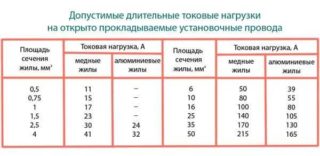 This indicator determines such wiring properties as its ultimate power, durability and fire safety.
This indicator determines such wiring properties as its ultimate power, durability and fire safety.
The conductivity of the laid line depends on the conductivity:
- heat loss from electron flow;
- preservation of current parameters, which is important for sensitive devices;
- the degree of cable temperature increase during the operation of powerful consumers;
- the presence or absence in the room of a smell from melting and burning wiring.
To understand what conducts current better - copper or aluminum, you can compare the degree of their resistance. The lower this indicator, the lower the likelihood of adverse events.
This indicator is:
- copper - 0.018 Ohm × mm² / m;
- aluminum - 0.028 Ohm × mm² / m.
Copper conducts current more than 1.5 times better. Compensation of resistance is achieved by increasing the cross section of the cores in the cable.
Which wiring material is better
With all the advantages of aluminum, one should not forget about its shortcomings. The main one, apart from the mechanical characteristics, is low conductivity. It is impossible to increase the cable diameter indefinitely, since household appliances and channels laid in the walls are not designed for this. Do not forget about such a factor as the fragility of the metal. After several years of operation, it may burst when replacing a socket or meter. It is undesirable to make a twist in the plant as it will not last long. The choice in favor of aluminum will give good savings on the purchase of materials, but subsequent repair costs can nullify it.
Copper also has its drawbacks, but they are offset by a large number of advantages. Even the process of pulling the cable through the channel is easier, as it bends well without any tendency to break or rupture. It is worth remembering about low resistance. By installing a line with 2.5 mm² cores, you can use as powerful consumers in your home as the general house line allows.
To summarize, we can recommend that masters make their choice in favor of copper products. If your budget is limited, you can combine materials using modern switching tools.
Useful Tips
The wiring diagram in the apartment consists of an upper and lower level. To the bottom there are sockets designed to power consumers whose power can reach 2 kW: washing machines, boilers, microwave ovens. In order not to expose the line to the risk of overheating and burning, it is advisable to run a copper cable here with a section of conductors that is maximum permissible for household outlets.
The upper level is used to power doorbells, ceiling and wall lamps.These products consume the least amount of electricity, especially if they have modern LED lamps. Above you can run a thin and inexpensive aluminum cable, the power reserve of which is enough with a large reserve. With this solution, a separate issue is the safe way to connect two incompatible metals.
To avoid problems with contacts after installation, you can use one of these devices:
- Clamp. The product consists of 3 steel plates. The cores are inserted between them, after which the plates are tightened with bolts.
- Bolt with 2 iron washers. The ends of the cores are twisted in rings and mounted on an axis, washers are installed between different materials. Tightening the nut provides reliable contact.
- Spring switch. Its terminals are treated with a special anti-corrosion grease. The cores are inserted into the grooves and secured by spring levers.
- Pads. They are a steel strip with contacts, pressed into a plastic case. At the ends of the cable are inserted into the holes where they are tightened with bolts. Products can be used to connect 2-10 pairs of wires.
To avoid oxidation of the wires, copper should be soldered, and aluminum should be coated with a special conductive paste.
